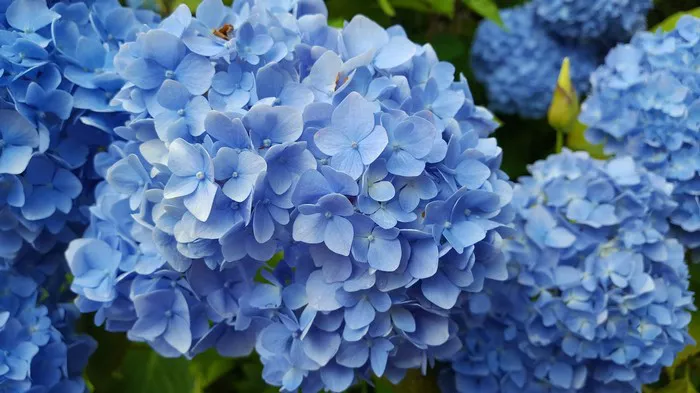Hydrangeas are beloved for their vibrant blooms and ornamental appeal in gardens worldwide. However, beyond their aesthetic allure, there is a persistent question: can you eat hydrangea flowers? In this article, we delve into the edibility of hydrangea flowers, their nutritional value, and offer tantalizing recipes that showcase their culinary potential.
Edibility of Hydrangea Flowers
The edibility of hydrangea flowers has long been a topic of debate. While some varieties are deemed safe for consumption in moderation, caution is advised due to potential toxicity. Hydrangeas contain cyanogenic glycosides, compounds that can release cyanide when ingested. As a result, it’s crucial to exercise caution and properly identify edible varieties before incorporating them into culinary endeavors.
The most commonly consumed hydrangea species include Hydrangea macrophylla, known for its large, showy blooms, and Hydrangea paniculata, characterized by its cone-shaped flower clusters. These varieties are generally considered safe to eat in small quantities, although individual tolerance may vary.
When harvesting hydrangea flowers for consumption, it’s essential to select blooms that are free from pesticides and other chemicals. Thoroughly wash the flowers before use to remove any dirt or debris.
Nutritional Value of Hydrangea Flowers
While hydrangea flowers are primarily valued for their visual appeal, they also offer a modest nutritional profile. These blooms are low in calories and fat, making them a guilt-free addition to various dishes. Additionally, hydrangea flowers contain small amounts of vitamins and minerals, including vitamin C, calcium, and potassium.
One cup of fresh hydrangea flowers (about 100 grams) provides approximately:
- Calories: 20
- Carbohydrates: 5 grams
- Protein: 1 gram
- Fat: 0 grams
- Vitamin C: 10% of the recommended daily intake
- Calcium: 2% of the recommended daily intake
- Potassium: 2% of the recommended daily intake
While hydrangea flowers may not be a nutritional powerhouse, they can contribute flavor, texture, and visual appeal to culinary creations.
Recipes Featuring Hydrangea Flowers
Now that we’ve explored the edibility and nutritional value of hydrangea flowers, let’s delve into some creative recipes that showcase their culinary versatility. From salads to desserts, hydrangea flowers can elevate a wide range of dishes with their delicate flavor and vibrant colors.
1. Hydrangea Salad with Lemon Vinaigrette
Ingredients:
- 2 cups mixed greens
- 1 cup fresh hydrangea petals
- 1/4 cup cherry tomatoes, halved
- 1/4 cup cucumber, sliced
- 2 tablespoons feta cheese, crumbled
- 2 tablespoons toasted almonds
- For the Lemon Vinaigrette:
2 tablespoons fresh lemon juice
1/4 cup extra virgin olive oil
1 teaspoon honey
Salt and pepper to taste
Instructions:
- In a small bowl, whisk together the lemon juice, olive oil, honey, salt, and pepper to make the vinaigrette.
- In a large salad bowl, combine the mixed greens, hydrangea petals, cherry tomatoes, cucumber, feta cheese, and toasted almonds.
- Drizzle the lemon vinaigrette over the salad and toss gently to coat.
- Serve immediately and enjoy the burst of flavors and textures.
2. Hydrangea Infused Honey
Ingredients:
- 1 cup honey
- 1/4 cup fresh hydrangea petals
Instructions:
- In a small saucepan, heat the honey over low heat until warm.
- Add the hydrangea petals to the warm honey and stir to combine.
- Allow the mixture to steep for 30 minutes to infuse the honey with the floral flavor.
- Strain the honey to remove the hydrangea petals.
- Transfer the infused honey to a clean, airtight jar and store it at room temperature.
- Use the hydrangea-infused honey to sweeten teas, drizzle over yogurt or desserts, or incorporate into marinades and dressings.
3. Hydrangea Petal Sorbet
Ingredients:
- 2 cups water
- 1 cup sugar
- 1 cup fresh hydrangea petals
- 2 tablespoons fresh lemon juice
Instructions:
- In a small saucepan, combine the water and sugar over medium heat, stirring until the sugar dissolves.
- Remove the syrup from the heat and add the hydrangea petals.
- Let the mixture steep for 30 minutes to infuse the syrup with the floral flavor.
- Strain the syrup to remove the hydrangea petals.
- Stir in the fresh lemon juice.
- Pour the mixture into a shallow dish and freeze for 4-6 hours, stirring occasionally to break up any ice crystals.
- Once frozen, transfer the sorbet to a blender and process until smooth and creamy.
- Serve the hydrangea petal sorbet in chilled bowls and garnish with additional hydrangea petals for a delightful and refreshing dessert.
Conclusion
While the question of whether you can eat hydrangea flowers is nuanced, with proper caution and knowledge, these blooms can be enjoyed in culinary endeavors. From salads to desserts, hydrangea flowers offer a delicate flavor and vibrant color palette that can elevate a wide range of dishes. However, it’s essential to exercise caution and ensure that only edible varieties are consumed. With creativity and culinary exploration, hydrangea flowers can add a touch of whimsy and elegance to your dining experiences.


